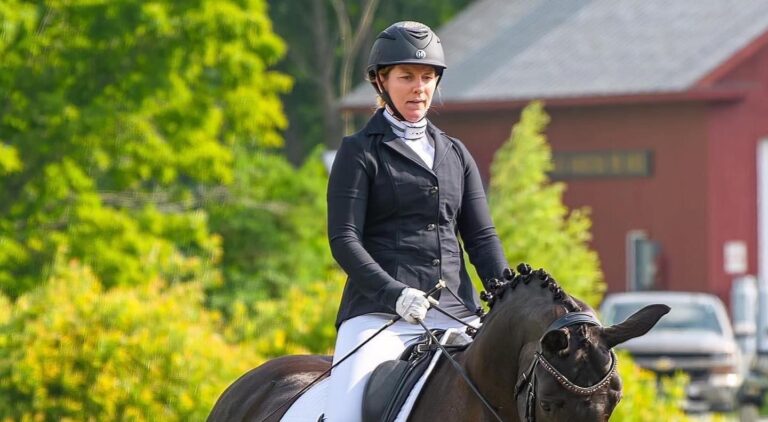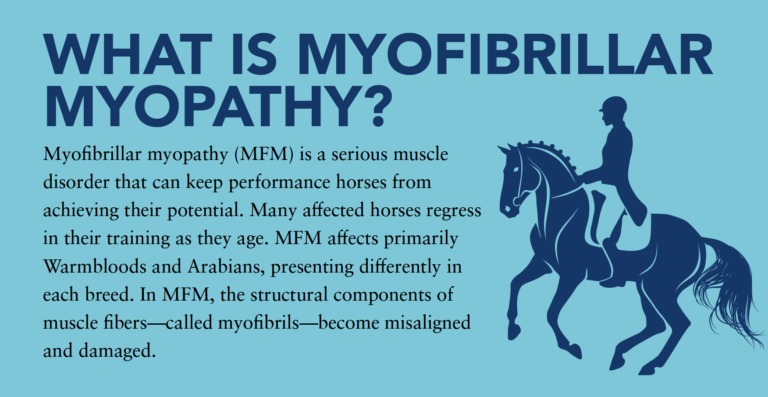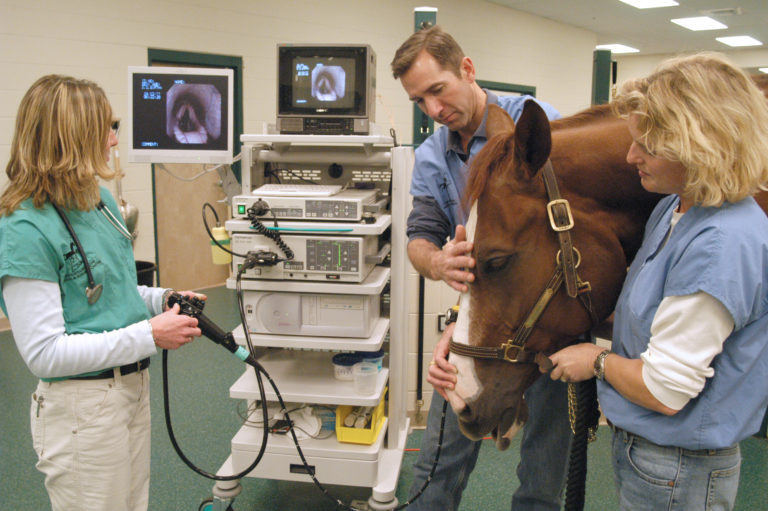When I teach riders from around the world, the most common problem I see in the rider’s seat is the loss of balance because of a closed hip angle and resulting tight seat and back muscles. A lack of awareness is the most common reason for this problem, along with physical or mental tension. I teach my students how to open the hip angle to achieve the correct seat position through relaxation. Many riders correctly focus on having the vertical balance of head over shoulders, hips and heels, but do not consider the hip angle. If the rider is not aware that the hip angle is closed, she may be giving up some of her ability to absorb the horse’s movement and use independent aids.

To effectively influence the horse, the rider’s job is to find her own balance first. Otherwise, she uses the horse for balance. With an open hip angle, the rider feels where her horse’s balance is and can set him up to carry himself in the best possible way. The rider is then strong in a supple way.
When I think of what I consider to be an ideal hip position, I think of Isabell Werth. Her hips are always in balance with the horse because of her open hip angle. In all her work, her lower back is soft and her upper body is supported with her abdominal muscles. She has successfully competed numerous horses in international Grand Prix competitions because of her balance and independent aids—the ability to use her seat, legs and rein aids without one aid influencing any others.
Open the Hip Angle
The foundation of an effective seat is an open hip angle. Your feet remain supported in correctly adjusted stirrups with the heels under the hips. Without losing the contact of your pubic bone with the saddle, your pelvis tips slightly back to make a wide angle of the hip from the torso to the thigh. The head and shoulders are still aligned vertically above the hips. The lower back relaxes so the weight of the horse’s connection is absorbed into a soft, effective back as opposed to a braced back. When the hip angle is open, the movement of the horse is allowed to go through the seat and the gaits are developed to their potential. Part of opening the hip angle is finding your stomach muscles: You should feel them pulling in toward your spine. Let your shoulders fall down away from your ears and pull your shoulder blades together so that your chest cavity is open without being stiff. The rib cage is drawn up and you stretch from the muscles that go across your belly button up to your rib cage. Those abdominal muscles hold your upper body tall.
The balance of the rider shifts back slightly when the hip angle is open versus closed, helping the horse shift his weight off the forehand. When you learn to open your hip angle and soften your seat muscles to find your own balance, the horse’s back can then soften and he can come more through from behind—meaning the horse allows the rider’s aids to move through his body unrestricted from front to back and back to front.
How to Find Your Ideal Hip Angle
The actual opening of the hip angle is more of an awareness issue than a flexibility issue. Before you get on your horse, practice while sitting in a chair or standing. The first step is relaxing your lower back. If you are holding your back muscles, you can’t open your hips. Bring your belly button back to find the most flexible point in your lower back, allowing the natural arch. You can hollow your back to feel the difference. With the back flexible again, practice opening and then closing your hips. With the hips open, relax your shoulders down and back without tightening them. Your upper body should feel open and stretched across your abdomen. Try to relax any stiffness that this new posture has created.


When your back is flat, the hips are open and the shoulder blades are back and together, and you should feel your muscles holding your upper body tall from your tailbone to the breastbone without stiffening. Try to feel the same position in the saddle. Once you are aware of the feeling, you can learn to ride your horse with the length and strength of your muscles rather than by closing or stiffening your body.
Balance Before Strength
When the rider mounts any horse, her job is to figure out where his point of balance is. The point of balance is the horizontal balance in which the horse can carry himself with the rider most easily. Each horse carries himself in his own way based on conformation and training. From this point, the balance can be improved. In order to feel it, the rider has to be in vertical balance (head over shoulders, hips and heels). The soft back, open hip angle and long upper body give the rider suppleness and strength to keep her position in balance no matter which horse she is on or what the horse is doing. This requires skill and experience. But whatever level you ride, maintaining your own balance is the goal.
A rider who loses her position is at the mercy of the horse’s balance instead of influencing the horse to be in his own ideal balance. A common issue is for the rider to stiffen when there is a problem with her or the horse’s balance. She may even feel she is being stronger, but if she tightens her back and hips, she stops following the horse’s movement and gives him a stiff connection through the seat. Mental and physical relaxation allow a rider to feel the horse and be most effective.
Coordination, strength and timing grow from the correct seat position because the balance allows you to find independent aids. As your aids become independent, you can develop coordination for maximum effectiveness. You become a strong and effective rider as opposed to a strong and stiff rider. Ask yourself, how much strength do you need? When do you need it? Then the aids are a matter of timing and coordination rather than a matter of strength.
Judy Allmeling was born in
the United States and moved to
Germany after graduating from
college. She studied with several
trainers including Seigfried
Steinmann and Herbert Rehbein.
More than 20 years later, she is
still in Germany operating Hof
Börnsen, an international training
and sales stable near Hamburg.











